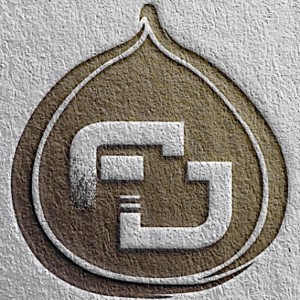This site contains affiliate links for which I may be compensated.
Angelique
Angelique Information


-
Possible Synonyms / AKA:
DFIC 115, Blanche, Coucourelle, Coucourelle Blanche, Early Lemon, Early Yellow, Figue d’Or (DFIC 300), Grise, Jaune Hative, Madeleine, Melette, Petite Figue, Petite Figue Grisé, Vendome, Yellow Angelique
-
Introduced By:
-
Origin:
-
Main Flavor Group:
-
Family Group:
-
Fig Type:
Common - Self fertile and will grow anywhere conditions are suitable -
Cold Hardy:
N/A -
Container Variety:
N/A -
Easy Rooting:
N/A -
Main Season:
any -
Availability:
N/A -
Breba Crop:
N/A -
Seed Crunch:
N/A -
Eye:
N/A -
Skin Toughness:
N/A -
Fruit Size:
N/A -
Rain Resistance:
N/A -
Tree Vigor:
N/A -
External Links:
Description
Condit Monograph
As Angelique: (syns. Melette, Petite Figue Grisé, Coucourelle Blanche, Madeleine, Early Lemon, Figue d’Or). See Rolland (1914) for synonymy. There are many descriptions of this variety. The most noteworthy ones follow. Merlet (1667), La Quintinie (1692), Liger (1702), Tournefort (1719), Duhamel (1768, 1809), Weston (1770), La Brousse (1774), Rozier (1787), Le Berryais (1789), Mirbel (1802), Noisette (1821, 1829), Bory DE Saint Vincent (1824), Lindley (1831), Couverchel (1839), M’Intosh (1855), Dochnahl (1855), Forney (1863), Hogg (1866), G. S. (1867), Barron (1868b), Du Breuil (1876), Hyde (1877), Coleman (1887b), Watts (1890), Massey (1893), Burnette (1894), Eisen (1901), Starnes (1903), Starnes and Monroe (1907), Evreinoff (1947), and Condit (1947). The color illustration by Duhamel (1809) shows a small, green fig with short, thick neck; the one by Barron shows a spherical fig, badly split at the apex; it is also figured by Starnes, and by Condit (1941a, fig. 2, D)
Confusion has existed as to the identity of this variety, as well as its synonyms. La Quintinie (translation by Evelyn) referred to “the little grey fig, almost of a tawny color, called Melette in Gascony.” Tournefort described it as Melette or Coucourelle, of small size and tawny color. Duhamel (1768) quoted Tournefort, then described the fruit as very large, of a yellow color. Bernard (1787) disagreed with Duhamel, and believed the description of Tournefort characterized the variety Coucourelle Brune better than Angélique. Practically all later writers describe the color as yellow. Mirbel called it Angélique or Melette, and stated that it was cultivated in nearly all parts of France. Figue d’Or, P.I. No. 18,880, and Madeleine, P.I. No. 18,890, both of the Chiswick collection, proved to be identical at Riverside. In view of the descriptions reviewed and of the specimens of Madeleine fruiting at Riverside, we are inclined to agree with Hogg, with G. S., and with Barron, rather than Eisen, that Madeleine is synonymous with Angélique. The Madeleine listed by some authors as a synonym of Blanche (Versailles) is different from the variety treated here. New French, described by Earle (1900), and by Price and White (1902), and listed as promising by Reimer (1910), is probably identical with Angélique.
Angélique is found in California only in collections. The tree is moderately vigorous, bearing two crops. The leaves are variously described as “more entire than any other,” and “longer than broad, and often have only three lobes.” Leaves of Riverside trees are medium, mostly 3-lobed; upper surface dull; upper sinuses rather shallow and narrow; base subcordate to truncate; margins coarsely crenate.
Breba crop fair to small; fruits medium, up to 2 inches in diameter, turbinate- spherical; neck very short and indistinct; stalk 1/4 inch long, swollen toward the apex; ribs present, narrow; eye large, open, scales chaffy, bordered with pink, often brightly colored; surface waxy or glossy; color lemon yellow, with white flecks few and inconspicuous; pulp light strawberry, hollow at the center. (Plate 21, C.)
Second-crop figs very similar in appearance to the brebas, but smaller in size; average weight 32 grams; shape oblate-spherical, without neck; stalk up to 3/4 inch long, often curved, and prominently swollen at the apex; fruit of beautiful appearance on account of the waxy surface, bright yellow color, and rosy eye scales; pulp light strawberry to almost amber, hollow, as shown by Condit (1941, fig. 11, C); flavor insipid; quality poor. Very susceptible to insect infestation through the open eye, and to subsequent spoilage. (Plates 8; 14, D.)
Figs incompletely Parthenocarpic , many fruits dropping when small; caprified specimens much the same as uncaprified ones in size and color, but with pulp bright strawberry in color.
In 1790, Thomas Jefferson planted the "White Angelie Fig" in an area "under the garden wall."1 He referred to this area as the "submural beds," where the plants had a warm, south-facing microclimate necessary to bear fruit. This fig is a French variety grown outside of Paris, seen by Jefferson while living there, and brought over to Monticello.2 However, there is no further mention of this particular fig as Jefferson seemed to prefer the Marseilles Fig.3
In general, Jefferson had success in growing figs in Virginia. The plant was sometimes difficult to harvest in colder climates compared to the Deep South, so he provided protective covering for the plants. He planted them as early as 1769 in the orchard and included figs in a 1774 South Orchard plan.
The Angelique fig is a half Hardy , Deciduous shrub that produces large, sweet fruits with cream-colored flesh and greenish-white, darkly striped skin in late summer and fall.
- Text from Thomas Jefferson Center for Historic Plants Information Sheet.
If you'd like your banner to be shown here and throughout Fig Database, send us a message.
Photos Add Your Image
No Images Found
YouTube Videos
No Videos Found









